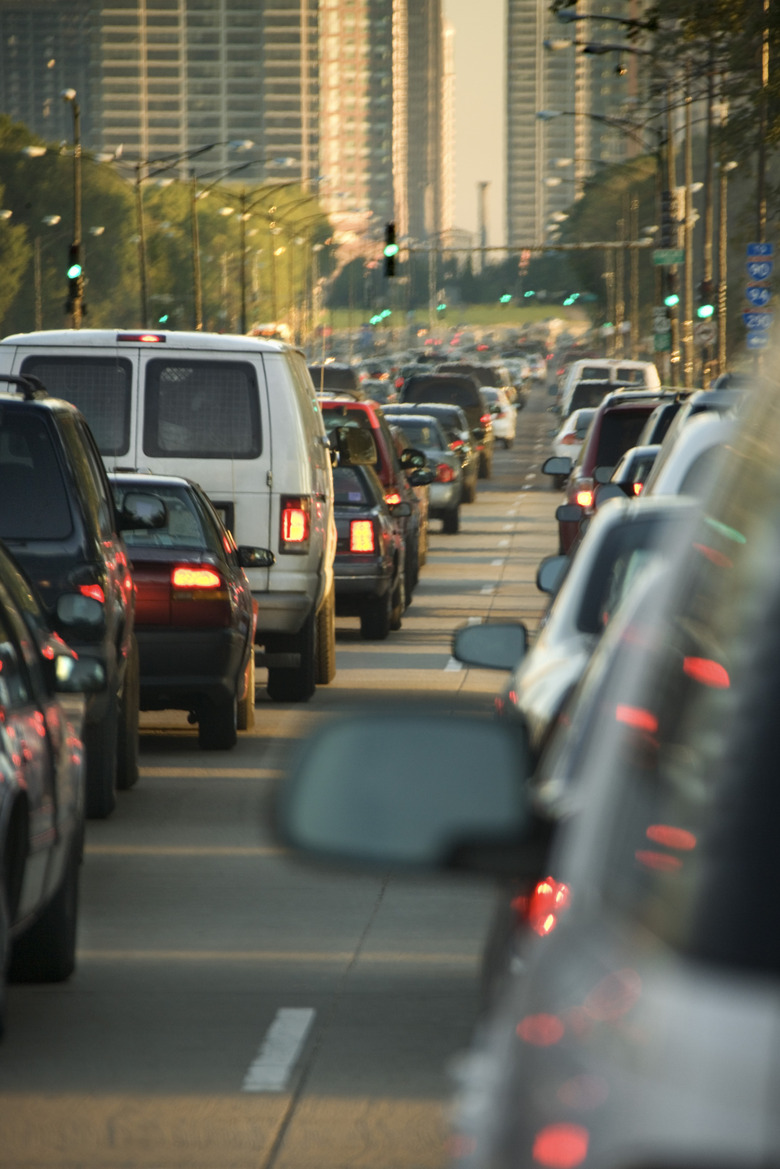How To Measure Noise Pollution
Noise pollution refers to extremely high levels of noise that can cause a nuisance or even health problems, by damaging the auditory system or disrupting a person's sleep. These noises can originate from a number of sources, including road traffic, faulty car or burglar alarms, noisy electrical appliances or unsociable people. There is no uniform legislation on noise pollution, but you can rely on the noise code of the noisiest cities in the U.S., like New York or Los Angeles. The process of measuring sound levels is quite easy, as all you need are commercially available sound level meters.
Step 1
Place the sound level meter on the spot where people are supposed to listen to the sound. For example, when measuring traffic sounds, the meter is on the pavement, while measuring loud music from next door, the meter is in your house. On the other hand, if you want to see if noise emissions abide by noise code rules, you must stand as many feet away from the source as the N.Y. noise code or the L.A. noise regulation requires.
Step 2
Point the reader's sensor towards the source of noise. Remove anything between the sensor and the noise source, such as a bag, a laptop or clothes.
Step 3
Record the noisy source (such as a working electrical appliance or a plane flying over) for as long as it lasts or for a period of 15 minutes if it is continuous (road traffic or an air conditioning system). Write on a notepad the fluctuations on the sound level meter's readings occurring every 30 seconds.
Step 4
Average the meter's readings by adding and then dividing them by 30 (the amount of half-minute periods during your experiment).
Step 5
Compare the average to municipal noise regulations to determine if a source creates illegal noise pollution. For example, a truck generating a sound of 90 decibels at 11:30 p.m., within 50 feet of a residential property when measured from a distance of 35 feet, violates the N.Y. noise code by 5 decibels. Otherwise, you can just compare your findings with the sound levels and relative loudness table of the Federal Agency Review of Selected Airport Noise Analysis Issues.
TL;DR (Too Long; Didn't Read)
If you are using an iPhone, you can download the SoundMeter to turn your device into a sound level meter. However, this application does not meet American National Standards Institute (ANSI) or International Electrotechnical Commission (IEC) standards for sound level meters.
Cite This Article
MLA
Vossos, Tasos. "How To Measure Noise Pollution" sciencing.com, https://www.sciencing.com/measure-noise-pollution-8732804/. 24 April 2017.
APA
Vossos, Tasos. (2017, April 24). How To Measure Noise Pollution. sciencing.com. Retrieved from https://www.sciencing.com/measure-noise-pollution-8732804/
Chicago
Vossos, Tasos. How To Measure Noise Pollution last modified March 24, 2022. https://www.sciencing.com/measure-noise-pollution-8732804/
